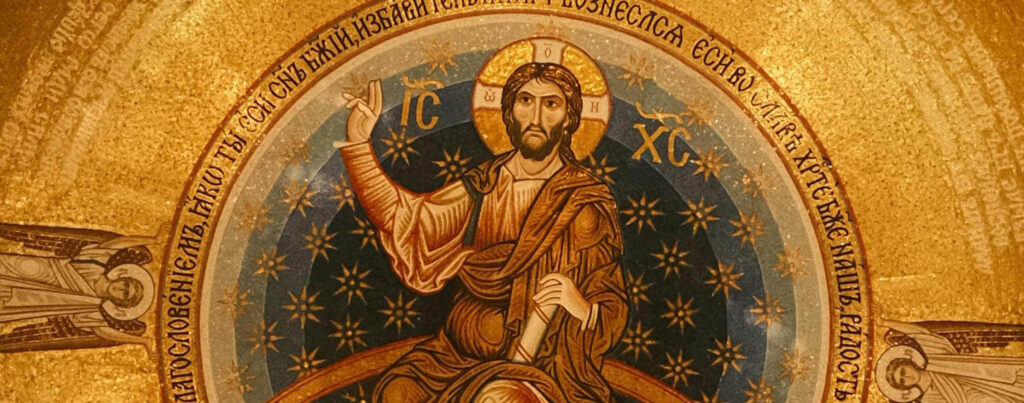The concept of a trinity is not unique to Christianity; it appears in various forms across cultures and religious traditions worldwide. To better understand the Christian Trinity, it is helpful to examine how similar triadic structures have been represented in other contexts, especially those that may have influenced modern cultures.
In Hinduism, the trinity is represented by the Trimurti, consisting of Brahma (the creator), Vishnu (the preserver), and Shiva (the destroyer). Together, they embody the essential processes of creation, preservation, and destruction that sustain the cyclical nature of the universe. While Brahma is traditionally regarded as the creator, his worship has significantly waned over time, and temples dedicated to him are rare. By contrast, Vishnu—along with his incarnations, Rama and Krishna—and Shiva, in his various forms, remain widely venerated. Their consorts, Saraswati (goddess of wisdom), Lakshmi (goddess of wealth), and Parvati (goddess of power), are also worshipped.

In Ancient Egyptian religion, the trinity is represented by Osiris, Isis, and Horus. Osiris, the father, symbolizes resurrection and the afterlife. Isis, the mother, represents fertility and magic, while Horus, the son, is associated with kingship and the sky. This triad was central to Egyptian religious practices and mythology. However, the decline of Ancient Egyptian religion began with the Roman conquest of Egypt in 30 BCE and accelerated with the rise of Christianity. By the 6th century CE, the traditional religion had largely disappeared. Some scholars suggest that the worship of Isis influenced certain Christian practices, such as the veneration of Mary. However, this connection remains speculative and is subject to debate.

In Buddhism, the concept of a trinity is symbolized by the Three Jewels: the Buddha (the awakened one), the Dharma (his teachings), and the Sangha (the community of practitioners). The term “enlightenment,” often associated with the Buddha, was popularized by Western audiences. A closer interpretation of the original Sanskrit and Pali terms bodhi and vimutti would be “awakening” or “liberation.”

In India, Buddhism is often viewed as an offshoot or integral part of Hinduism, as many consider Hinduism the foundation from which Buddhism emerged. However, Buddhism fundamentally differs in its rejection of a creator god or divine worship. Instead, Buddhists focus on meditation, chanting, and personal practice as paths to spiritual growth.
This unique approach to spirituality makes the Buddhist concept of a trinity distinct, as it does not involve divine beings but rather highlights the interconnectedness of the teacher, the teachings, and the community.
What is the Christian Notion of the Trinity?
In Christianity, the doctrine of the Trinity holds that God is one essence in three persons: the Father, the Son (Jesus Christ), and the Holy Spirit. This understanding emerges more fully in the New Testament but has its roots in the Old Testament.
Thus, the Christian concept of the Trinity is not derived from other cultures but stands as a unique and unparalleled doctrine. Let us explore its distinctiveness in greater depth.
The Old Testament: Yahweh as the One True God
In the Old Testament, Yahweh is unequivocally presented as the one true God who seeks a covenant relationship with His people. Through His promise to Abraham and his son Isaac (Genesis 17:19), Yahweh established the nation of Israel. The Shema, a central Jewish prayer, emphasizes God’s oneness:
“Hear, O Israel: The LORD our God, the LORD is one” (Deuteronomy 6:4).
Messianic Prophecies and the Son
The Old Testament also contains writings that hint at the coming of the Messiah, whom Christians understand as Jesus Christ. For instance, Isaiah 9:6 proclaims:
“For to us a child is born, to us a son is given, and the government will be on his shoulders. And he will be called Wonderful Counselor, Mighty God, Everlasting Father, Prince of Peace.” Christians argue that this verse cannot be attributed to any historical figure in Jewish history. The descriptors—“Mighty God” and “Everlasting Father”—point to a divine nature that transcends human kingship. Early Christian theologians like Justin Martyr and later Augustine affirmed that this prophecy finds its ultimate fulfillment in Jesus.
The Spirit in the Old Testament
The Spirit of God is also present in the Old Testament. From the beginning, we see the Spirit’s role in creation:
“Now the earth was formless and empty, darkness was over the surface of the deep, and the Spirit of God was hovering over the waters” (Genesis 1:2).
The Spirit appears throughout the Old Testament, empowering leaders (Judges 6:34), inspiring prophets (Ezekiel 2:2), and promising renewal (Ezekiel 36:26-27). These references foreshadow the Holy Spirit’s fuller revelation in the New Testament.

The New Testament: The Trinity Revealed
With the advent of Jesus, the New Testament begins to articulate the relationship between the Father, the Son, and the Holy Spirit. John the Baptist, regarded as a devout Jew possibly influenced by the Essenes, testifies to Jesus’ divine identity. In John 1:29-34, John declares:
“Behold, the Lamb of God, who takes away the sin of the world! … I have seen and I testify that this is God’s Chosen One.” This affirmation is significant because no God-fearing Jew would condone the worship of a mere man. Jesus’ claim to divinity—“I and the Father are one” (John 10:30)—was the very charge that led to His crucifixion (John 19:7). For many Jews, the idea of God taking human form remains contentious.
The Trinity: Unity in Diversity and the Fullness of Life
The Christian understanding of the Trinity is neither an additive nor a subtractive concept—it is a profound declaration of oneness. To illustrate, consider the forms of water: ice, liquid, and steam. Each possesses distinct properties yet remains fundamentally the same substance. Similarly, the Father, Son, and Spirit are distinct yet one.
While echoes of trinitarian ideas can be found in other traditions, the Christian notion is uniquely centered on relational unity and transformative grace. Jesus speaks of a rebirth not born of human effort but of the Spirit—a life that is abundant, whole, and eternal.
This life, offered through Christ, is not merely an escape from suffering or a detachment from the world, as seen in concepts like nirvana, but rather a transformative journey into a relationship with the living God. Through the Trinity, Christianity reveals not merely a theological concept but a transformative journey toward wholeness and fellowship with God, beckoning believers to encounter the divine power for this life that is found uniquely in Jesus. There could be no better conclusion than in the words of the apostle John:
‘But these are written that you may believe that Jesus is the Messiah, the Son of God, and that by believing you may have life in his name.’ (John 20:31)



![[Download] Timeless Wisdom from Noah’s Ark: A Brilliant Life Lesson](https://hopeunlimited.in/wp-content/uploads/2024/12/the-brilliant-lesson-learnt-from-noahs-ark-story-from-the-bible-genesis-7-150x150.png)
